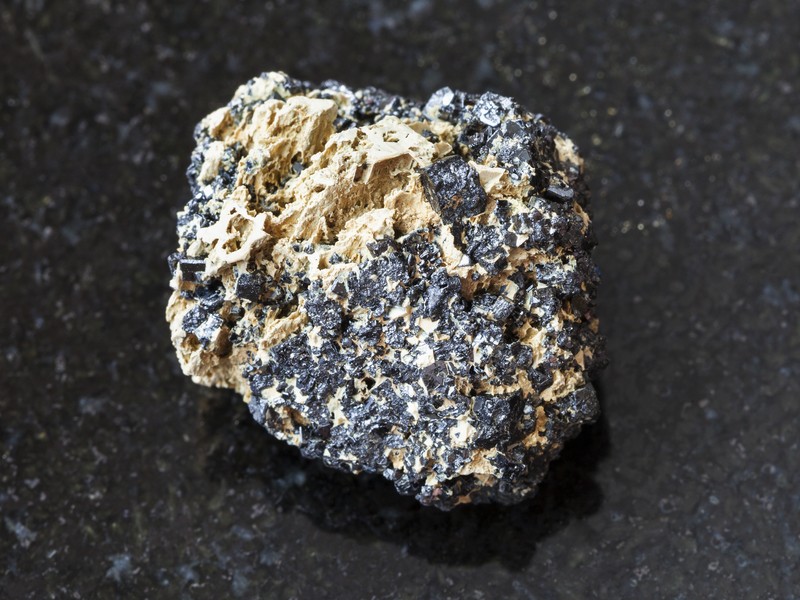
UC professor researches perovskite for chemical processes

UC Assistant Professor of Chemical Engineering Jingjie Wu.
Perovskite is not exactly a household name, but it's actually one of Earth's most common minerals. Perovskite makes up 38 percent of Earth's entire mass. You just don't hear about it because most of it is buried hundreds of miles under the planet's surface.
University of Cincinnati chemical engineering professor Jingjie Wu, Ph.D., is fascinated by the practical applications of perovskite. Wu recently received the Oak Ridge Associated Universities' Ralph E. Powe Faculty Enhancement Award for his proposal, "Developing the Design Principles of Layered Perovskites Catalysts for Chemical Synthesis."
Over the next year, Wu will collaborate with the Oak Ridge National Laboratory in Oak Ridge, Tennessee, to complete the project.
"The research will aim to develop a new class of catalysts," Wu said. "We will use this new class to study different chemical activations and reactions using perovskite."
Perovskite may not seem relevant to you or me, but to scientists and engineers, this mineral is the cornerstone for cutting-edge research. Wu's innovative work is a reflection of UC's strategic direction, Next Lives Here.
As a semi-conductor, perovskite presents fascinating possibilities, and its abundance makes research and development inexpensive. Researchers are exploring applications of perovskite in technologies such as solar panels, television screens and LED lights.
Perovskite's also has a unique makeup, makingit one of nature's most flexible minerals -- scientists can easily alter perovskites electronic and crystal structure to fit research and industry needs.
Wu plans to use this unique makeup to drive chemical processes.
Layered perovskite has a structural formula of A2BO4, meaning perovskites are composed of two metal elements (A and B) and one oxygen element. As Wu adjusts the properties of the A-site metal, the B-site changes accordingly.
"There are abundant opportunities to tune the electronic structure of perovskite," Wu said. "That's the beauty of it."
By intentionally altering its structure, Wu hopes to use perovskite as a catalyst to drive chemical reactions in processes such as fuel or gas conversion. For this research, he is focusing on one compound in particular: Isopropanol.
Isopropanol (C3H8O) can be converted into propylene through dehydration (the removal of water) or acetone through dehydrogenation (the removal of hydrogen). If Wu can show that perovskite can act as a catalyst to activate these changes, then perovskite may be fundamental in driving other types of chemical reactions that involve similar bond activation.
Thanks to the collaboration between UC and the Oak Ridge National Laboratory, perovskite may soon replace other catalysts as a better, cheaper option for sparking important chemical processes.
Featured image at top: A rouch perovskite stone is placed against a dark granite background. Perovskite makes up 38 percent of the Earth's mass. Photo/vvoe/Shutterstock
Next Lives Here
The University of Cincinnati is classified as a Research 1 institution by the Carnegie Commission and is ranked in the National Science Foundation's Top-35 public research universities. UC's graduate students and faculty investigate problems and innovate solutions with real-world impact. Next Lives Here.
Related Stories
Engineering student works to create safer ground transportation
April 15, 2024
Ground transportation has a substantial impact on the daily lives of humans. Sai Bonthu, a doctoral candidate of electrical and computer engineering at the University of Cincinnati, is working to develop a product that has the potential to accurately reduce traffic accidents. Currently, he is working on a grant with the Ohio Department of Transportation and was named Graduate Student Engineer of the Month by the College of Engineering and Applied Science.
The next generation of care
April 15, 2024
University of Cincinnati student-led nonprofit organization Parkinson's Together takes a multidisciplinary approach to meeting the needs of patients with Parkinson's disease in their community. Now it's setting a model for student organizations across the country.
UC engineering co-op medalist excels through 6 co-op experiences
April 15, 2024
Ever since she garnered an appreciation for chemistry in high school, fifth-year University of Cincinnati student Jaclyn Bashore has not looked back. When she graduates with a chemical engineering degree and a minor in chemistry this spring, Bashore will have had six co-op experiences — along with a new full-time job at AbbVie, a biopharmaceutical research company with whom she did two co-op rotations. To commemorate her exceptional co-op work, the UC College of Engineering and Applied Science awarded Bashore the 2024 Herman Schneider Medal, an annual award given to a graduating senior who demonstrates outstanding success as a co-op student.
